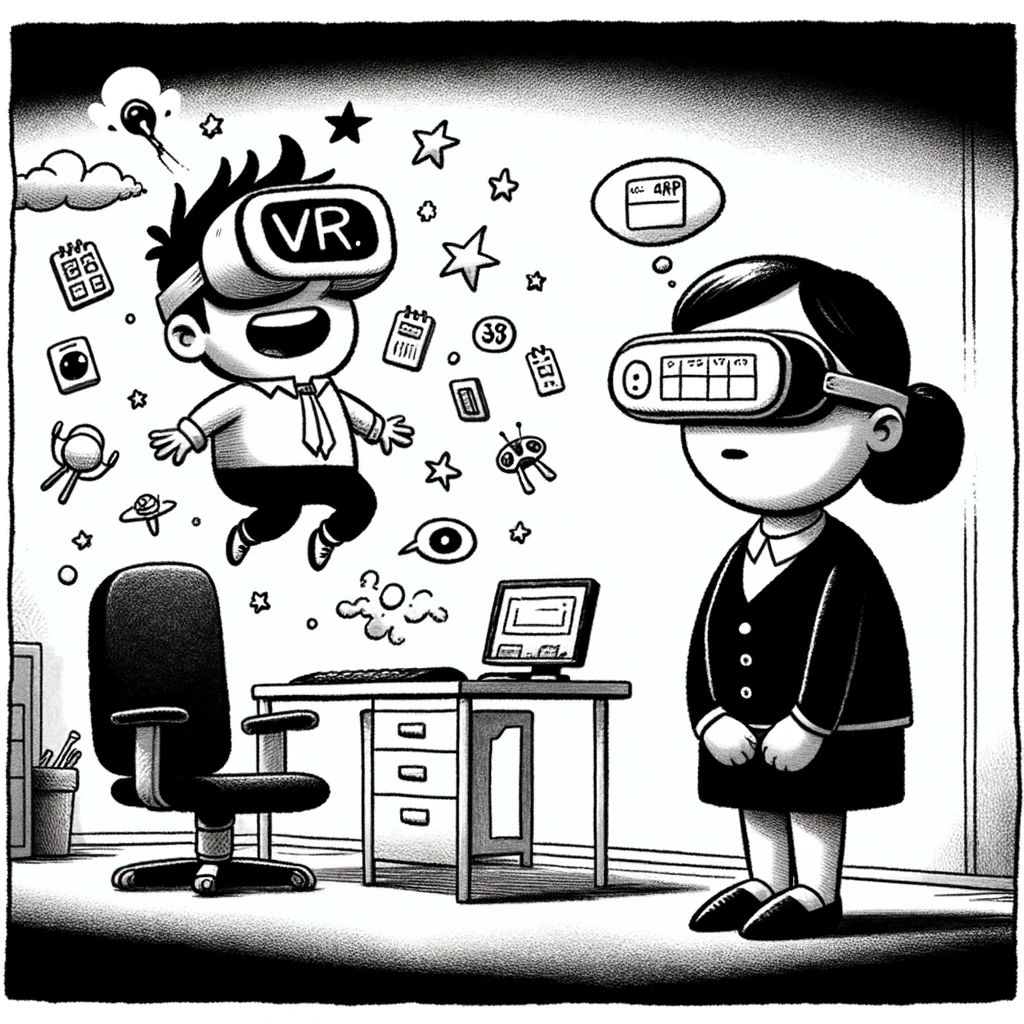The landscape of emerging technologies is continuously evolving, radically transforming our interaction with the digital world. At the forefront of this revolution are augmented reality (AR) and virtual reality (VR), two technologies that have not only intrigued tech aficionados and gamers but have also become pivotal tools for businesses across various sectors. With the AR and VR market combined projected to generate revenue of approximately USD 32.1 billion in 2023, and expected to grow significantly in the coming years, these technologies hold immense potential to reshape industries like education, healthcare, entertainment, and manufacturing. This article delves into a comparative analysis of AR and VR, aiming to elucidate their distinct characteristics as well as their overlapping functionalities.
These figures indicate that both AR and VR markets are not only substantial in their current state but are also expected to experience robust growth in the coming years. The high growth rates projected for these markets reflect the increasing adoption and integration of AR and VR technologies across various sectors, including entertainment, education, healthcare, and more.

Augmented reality is a technology that overlays digital content, such as images, videos, and 3D models, onto the real world. AR uses cameras, sensors, and other hardware components to recognize and track the user’s surroundings and display relevant information on top of it. For example, you can use AR to see how furniture looks in your living room before you buy it, or to get information about a famous monument by pointing your smartphone camera at it.
On the other hand, virtual reality is a technology that creates a simulated environment that completely immerses the user in a digital world. VR uses head-mounted displays (HMDs) and motion controllers to create a fully immersive experience that can simulate different environments, scenarios, and interactions. For example, you can use VR to explore a virtual museum, play immersive games, or train for hazardous jobs in a safe environment.
While both AR and VR are immersive technologies, they differ in their applications and usage scenarios. Here are some of the main differences between the two:
AR and VR have several benefits and challenges that make them unique and valuable for different applications. Here are some of the key advantages and limitations of each technology:
AR Benefits:
Augmented Reality (AR) significantly enhances the user experience by overlaying digital content onto the real world, creating a unique blend of the physical and virtual realms. This technology offers a more enriched and interactive environment, allowing users to perceive and interact with digital elements seamlessly integrated into their real-world surroundings. In the realm of learning and education, AR provides a substantial boost by presenting educational content in a more interactive and engaging manner. It transforms traditional learning methodologies into an immersive experience, aiding in better comprehension and retention of information. For instance, AR can bring historical events to life or visualize complex scientific concepts, making them more accessible and understandable. In retail and advertising, AR has the power to revolutionize the way products are showcased and experienced. Customers can visualize products in a realistic setting before purchasing, such as seeing how a piece of furniture would look in their living room or how a pair of glasses would look on their face. This interactive approach not only increases sales but also enhances customer engagement and satisfaction.
AR Challenges:
However, AR also faces its own set of challenges. One significant limitation is the level of immersion and field of view it offers compared to Virtual Reality (VR). While VR completely immerses the user in a digital environment, AR can only augment the existing environment, which may limit the depth of the user experience. Hardware limitations also pose a challenge for AR development and adoption. The need for specific devices or accessories, such as AR glasses or headsets, can be a barrier, and compatibility issues with different types of hardware can hinder widespread use. Additionally, privacy concerns and the potential misuse of AR technology are important considerations. As AR integrates digital information into the real world, it raises questions about data security and personal privacy. There’s also the risk of AR being used in intrusive or unethical ways, which necessitates careful consideration and regulation to ensure the technology is used responsibly and ethically.
VR Benefits:
Virtual Reality (VR) offers a distinct and powerful advantage by providing a fully immersive and interactive experience that can accurately simulate real-world scenarios. This complete immersion allows users to engage with and respond to a virtual environment as if it were real, making it an exceptional tool for various applications. For instance, VR is particularly beneficial in training and simulations, especially for hazardous jobs and environments. It offers a safe and cost-effective alternative to real-life training, reducing the risks and costs associated with physically practicing in potentially dangerous settings. This application of VR is invaluable in sectors like healthcare, military, aviation, and heavy machinery operation, where it can simulate complex scenarios and emergency responses.
Moreover, in the realm of entertainment and gaming, VR takes experiences far beyond the capabilities of traditional media. It offers a new dimension of engagement and interactivity, allowing users to be part of the story or game environment, rather than mere spectators. This enhancement has led to the creation of incredibly vivid and engaging gaming and cinematic experiences that were previously unimaginable.
VR Challenges:
However, the implementation and widespread adoption of VR technology come with several challenges. One of the most significant barriers is the requirement for specialized hardware and software, which can be both expensive and complex. The cost of high-quality VR headsets and the powerful computers needed to run them can be prohibitive for many consumers and small businesses. Additionally, setting up and maintaining VR systems requires a certain level of technical know-how, which can be a deterrent for those who are not tech-savvy.
Another concern associated with VR is the potential for motion sickness and other health issues. The immersive nature of VR can sometimes lead to disorientation and nausea, commonly referred to as VR-induced motion sickness. This is particularly challenging for developers as they strive to create experiences that are both immersive and comfortable for a wide range of users.
Lastly, VR technology, in its current state, often limits social interaction and collaboration compared to real-world experiences. While it offers an immersive individual experience, it can isolate users from their physical environment and from other people. This can be a disadvantage in applications where collaboration and social interaction are key, such as in education and certain work scenarios. Efforts are being made to enhance the collaborative aspects of VR, but it remains a significant challenge to replicate the dynamics and nuances of real-world social interactions in a virtual space.
What the experts are saying:
Mark Zuckerberg, Tim Cook, and Satya Nadella, notable tech leaders from Facebook, Apple, and Microsoft respectively, have shared their perspectives on the evolving landscape of augmented reality (AR) and virtual reality (VR). Zuckerberg envisions AR as a transformative force in daily life, where physical objects like TVs could turn into inexpensive apps within an AR app store. He also sees VR’s potential as a new communication platform that allows for sharing experiences in a more immersive and present manner. Meanwhile, Apple CEO Tim Cook firmly believes in AR as a “core technology,” predicting its impact to surpass that of VR. This belief is reflected in Apple’s focus on AR, envisioning it as a technology that integrates more seamlessly into everyday life. Satya Nadella of Microsoft views AR as “perhaps the ultimate computer,” underscoring its wide-ranging applications and transformative potential. This convergence of views among these industry leaders highlights the significant role AR and VR are poised to play in shaping future technological trends and experiences.
AR and VR are two emerging technologies that have the potential to revolutionize many industries and applications. While they share some similarities, such as their immersive nature, they have different applications, benefits, and challenges. Understanding the differences between AR and VR can help businesses and individuals choose the right technology for their needs and achieve their goals. Whether it’s enhancing user experience, improving learning and education, or providing immersive entertainment and simulations, AR and VR are both here to stay.
By Gary Bernstein





